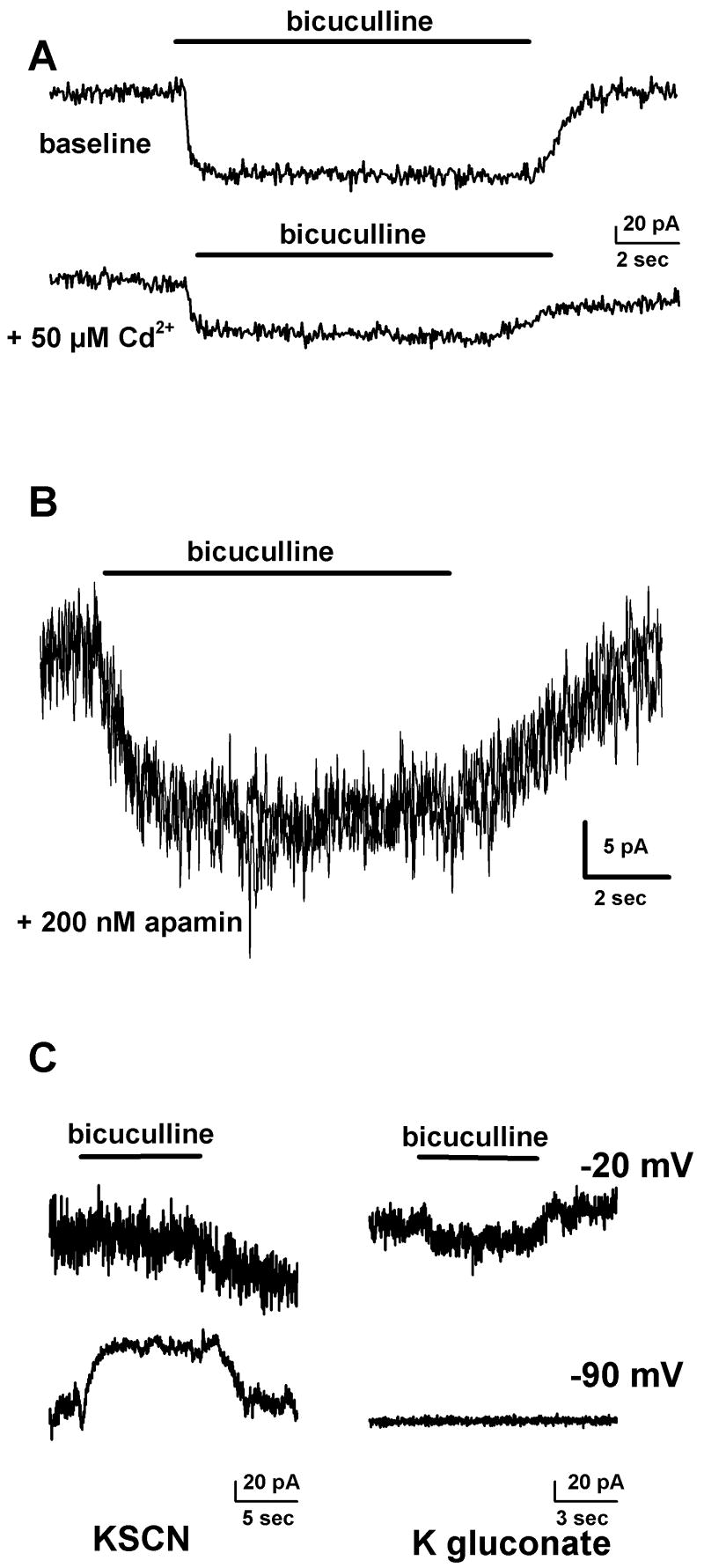Figure 3.
The tonic current is not mediated by calcium-activated potassium (SK) channels. A. To test the alternative hypothesis that SK channels mediate the tonic current, currents were measured using 10 μM bicuculline in the absence and presence of 50 μM cadmium. The tonic current persisted in the presence of cadmium (n = 9). Vm was −20 mV with a cesium methanesulfonate pipette solution. B. The tonic current also persisted in the presence of the specific SK channel blocker apamin (200 nM; n = 7). Vm was −20 mV with a cesium methanesulfonate pipette solution. C. Measuring tonic currents using pipettes filled with the highly permeant anion thiocyanate (left panels) reveals an inward current that is more prominent at a more negative holding potential. In contrast, the tonic current measured using pipettes filled with the impermeant anion gluconate (right panels) is more prominent at a less negative holding potential. In both cases, the potassium reversal potential is near −70 mV while the chloride reversal potential is near 0 mV with thiocyanate and near −70 mV with gluconate. The response of the tonic current amplitudes to changing the anion in the recording pipette is most consistent with a chloride current.

